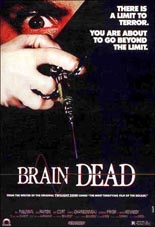
 Adam Simon’s Brain Dead is engineered to mess with your head. It undoubtedly will succeed if you have trouble telling Bill Pullman apart from Bill Paxton, since both men star in the loftier-than-usual Roger Corman production.
Adam Simon’s Brain Dead is engineered to mess with your head. It undoubtedly will succeed if you have trouble telling Bill Pullman apart from Bill Paxton, since both men star in the loftier-than-usual Roger Corman production.
Pullman (Spaceballs) is neurosurgeon Dr. Rex Martin, cajoled by hospital administrator Jim Reston (a visibly grease-slicked Paxton, Weird Science) into determining if mental patient Jack Halsey (Bud Cort, The Life Aquatic with Steve Zissou) is faking his clinical paranoia. A mathematics genius believed to have killed his family, Halsey has important numbers in his head that some very important people want retrieved.
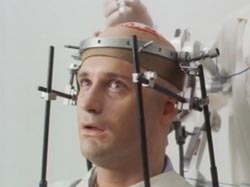 Entering his findings into what appears to be a MacPaint knockoff, Dr. Martin finds Halsey to be the real deal. Our good doctor then helplessly bounces between realities in which he is not the physician, but the patient; in which he is a doctor, but under Halsey’s name; in which various people — including his wife (Patricia Charbonneau, Manhunter) — are found murdered, their eyes stabbed free of their sockets.
Entering his findings into what appears to be a MacPaint knockoff, Dr. Martin finds Halsey to be the real deal. Our good doctor then helplessly bounces between realities in which he is not the physician, but the patient; in which he is a doctor, but under Halsey’s name; in which various people — including his wife (Patricia Charbonneau, Manhunter) — are found murdered, their eyes stabbed free of their sockets.
So often does Brain Dead leap from level to level, with Dr. Martin jolting “awake” in a sweaty panic, I couldn’t help but think of The Kids in the Hall‘s classic sketch a year earlier in which “I had the pear dream again.” Simon’s movie is like those three minutes, if extended to a feature length. It would function better as an episode of The Twilight Zone — which makes total sense since Charles Beaumont, a regular scribe for that landmark TV series, shares screenplay credit with Simon — especially since they do not have the budget necessary to pull off their collective ambition.
Is it “the most terrifying film of the decade,” as the posters claimed? No. It’s not terrifying at all, yet at least one cannot fault the movie for overflowing with ideas. Whereas Simon went on to bigger things, notably Corman’s Carnosaur, Beaumont remained deceased, having passed away in the late 1960s. Another nugget of trivia: Paxton’s Martini Ranch band provides the club-ready, Dragnet-era Art of Noise-esque end theme. —Rod Lott

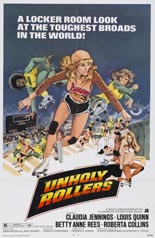
 Sick of being sexually harassed by the boss, cat-food factory worker Karen Walker (Claudia Jennings,
Sick of being sexually harassed by the boss, cat-food factory worker Karen Walker (Claudia Jennings, 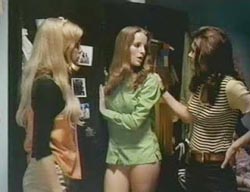
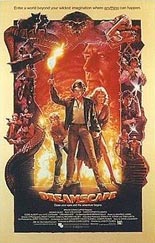
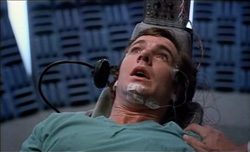

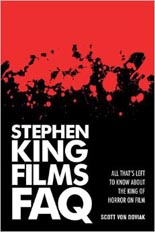

 With HazMat, writer/director/producer Lou Simon not only proves that women can make slasher films, too, but also that they can be as terrible as men’s.
With HazMat, writer/director/producer Lou Simon not only proves that women can make slasher films, too, but also that they can be as terrible as men’s. 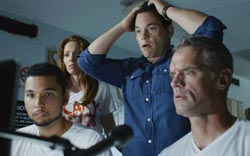 Pretty quickly after entering, Jacob cannot separate reality from stupid prank shows and snaps. He then … well, let’s let one of the more annoying characters tell us via her unbelievably calm phone call for help: “There is a crazy man with an ax. He’s already killed two people and he’s coming after us.”
Pretty quickly after entering, Jacob cannot separate reality from stupid prank shows and snaps. He then … well, let’s let one of the more annoying characters tell us via her unbelievably calm phone call for help: “There is a crazy man with an ax. He’s already killed two people and he’s coming after us.”